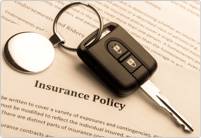RCW 46.61.385:
School patrol—Appointment—Authority—Finance—Insurance.
The superintendent of public instruction, through the superintendent of schools of any school district, or other officer or board performing like functions with respect to the schools of any other educational administrative district, may cause to be appointed voluntary adult recruits as supervisors and, from the student body of any public or private school or institution of learning, students, who shall be known as members of the "school patrol" and who shall serve without compensation and at the pleasure of the authority making the appointment.
The members of such school patrol shall wear an appropriate designation or insignia identifying them as members of the school patrol when in performance of their duties, and they may display "stop" or other proper traffic directional signs or signals at school crossings or other points where school children are crossing or about to cross a public highway, but members of the school patrol and their supervisors shall be subordinate to and obey the orders of any peace officer present and having jurisdiction.
School districts, at their discretion, may hire sufficient numbers of adults to serve as supervisors. Such adults shall be subordinate to and obey the orders of any peace officer present and having jurisdiction.
Any school district having a school patrol may purchase uniforms and other appropriate insignia, traffic signs and other appropriate materials, all to be used by members of such school patrol while in performance of their duties, and may pay for the same out of the general fund of the district.
It shall be unlawful for the operator of any vehicle to fail to stop his or her vehicle when directed to do so by a school patrol sign or signal displayed by a member of the school patrol engaged in the performance of his or her duty and wearing or displaying appropriate insignia, and it shall further be unlawful for the operator of a vehicle to disregard any other reasonable directions of a member of the school patrol when acting in performance of his or her duties as such.
School districts may expend funds from the general fund of the district to pay premiums for life and accident policies covering the members of the school patrol in their district while engaged in the performance of their school patrol duties.
Members of the school patrol shall be considered as employees for the purposes of RCW 28A.400.370.
WAC 467-03-010:
Pedestrian bicycle safety equipment rules.
High-visibility protective vests, traffic control flags, warning signs, and other equipment are designed to increase the visibility of persons assisting pedestrians and bicycles at crosswalks, including school and playground zones. This equipment will be in compliance with the most current American National Standards Institute/International Safety Equipment Association (ANSI/ISEA) 107 standard for high visibility safety apparel and accessories.
The Washington traffic safety commission may furnish this equipment to schools and other users through grants from the school zone safety account as provided by RCW 46.61.440(5).
The use of uniforms and equipment designated for use by school patrols, pursuant to WAC 392-151-090 (Standard uniforms) and WAC 392-151-095 (Equipment), by persons assisting pedestrians and bicyclists in school and playground zones, will also be deemed in compliance with this rule.
[Statutory Authority: RCW 43.59.070. WSR 17-21-042, § 467-03-010, filed 10/13/17, effective 11/13/17. Statutory Authority: RCW 34.59.070 and 43.59.150. WSR 01-22-011, § 467-03-010, filed 10/26/01, effective 11/26/01.]
Chapter 392-151 WAC:
TRAFFIC SAFETY — SCHOOL SAFETY PATROL
Last Update: 12/14/18
392-151-003 Authority.
The authority for this chapter is RCW 46.61.385 which authorizes the appointment and operation of school patrols by any public or private school subject to the conditions, procedures, and considerations required by this chapter. RCW 28A.160.160(5) requires walking routes for elementary schools, and such supplemental conditions, procedures, and considerations as any such school may impose which are in the best interest of student safety.
392-151-005 Purpose.
The purpose of this chapter is to implement RCW 46.61.385 and provide for safe operation of school patrols.
392-151-010 Function of a school patrol.
The function of a school patrol is to assist and aid members of the student body in the safe and proper crossing of roadways adjacent to the school.
Student school patrol members assigned to work at a location with an adult school patrol member shall assist and act at the direction of such adult member of the patrol. A school patrol is to look for and utilize natural gaps in traffic as much as possible when allowing students to cross a roadway.
392-151-015 Administration and support.
The superintendent or chief administrative officer of the school district shall be ultimately responsible for determining school patrol policy and operations. The principal of each school shall provide leadership in developing the school patrol. Daily operation of a school patrol may be delegated to a school employee or a safety committee.
392-151-020 Liability.
Both a school district and its employees or agents are potentially liable for damages sustained by students or others as the result of negligence. Any school district operating a school patrol shall adopt policies and procedures to reduce the potential liability and ensure student safety, including:
(1) The supervision and control of the school patrols by a school employee.
(2) Limiting the selection of student patrol members to students who are preferably ages ten or older and who possess appropriate physical and mental abilities.
(3) Authorizing any parent to have his or her child excluded from service on the safety patrol.
(4) Requiring school boards to provide insurance for members of the school patrol and for all supervisory officials involved in the program.
(5) Setting forth specific physical and other criteria for selecting school patrol members and providing adequate training.
(6) Observing patrollers during inclement weather, hours of semidarkness and emergencies.
In addition, schools should periodically conduct a complete review of the entire school patrol program, including the following:
(a) The selection of supervisors.
(b) The training of both supervisors and patrol members.
(c) The determination of the streets which are to be used and not used.
(d) The equipment needed.
(e) Procedures for emergencies, inclement weather and hours of semidarkness.
392-151-025 Route plans.
Suggested route plans shall be developed for each elementary school that has students who walk to and from school. It shall recommend school routes based on considerations of traffic patterns, existing traffic controls, and other crossing protection aids such as school patrols. These route plans shall limit the number of school crossings so that students move through the crossings in groups. The walking route plan shall be distributed to all students.
392-151-030 Controlled crossings.
(1) School patrol controlled crossings shall not be operated unless proper traffic control devices are in place as depicted in Washington state department of transportation, Sign Fabrication Manual and Manual on Uniform Traffic Control Devices, as now or hereafter amended. As a minimum, these shall consist of:
(a) School crossing warning signs S1-1 and S2-1.
(b) Marked crosswalks.
(c) School speed limit sign.
(2) Contact shall be made by school authorities with the governmental agency having jurisdiction over the street or highway in question in order to secure the necessary signs.
(3) Where conditions are such that a patrol member cannot be seen at least as far away as the safe stopping distance for the legal speed at the location, one of the following procedures shall be carried out:
(a) Select a safer location for the crossing at which the patrol is to serve.
(b) Cooperatively evaluate the condition with traffic authorities having jurisdiction for the purpose of developing possible alternative measures.
392-151-035 School crossing warning and speed limit signs.

392-151-040 Organization, instruction, and supervision.
The school principal or a member of the staff appointed by the principal shall supervise the school patrol. Criteria for the selection of a school patrol supervisor shall include:
(1) Interest in safety.
(2) Ability to organize, lead and discipline.
(3) Ability to recognize individual differences.
(4) Dependability.
392-151-045 Duties of patrol supervisor.
Duties of a school patrol supervisor shall include:
(1) Being knowledgeable in all areas of the school patrol.
(2) Selection of school patrol members according to school policy.
(3) Instruction and training of all school patrol members and officers in their respective duties.
(4) Hold regular meetings of the school patrol for the purpose of instruction in safety practices and discussions concerning infractions of rules.
(5) Instruction in traffic rules and regulations shall be given to all children attending the school. Written rules and regulations shall be distributed to parents/guardians and students.
392-151-050 Selection, appointment and suspension of patrol members.
Student school patrol members shall be selected from the upper grade levels and preferably not below age ten. Qualities such as leadership and reliability shall be considered in the selection of any patrol member.
Written approval of a parent or guardian shall be secured in the case of student patrol members. Each prospective patrol member shall be given a vision and hearing examination. The parent(s) or guardian(s) of a student patrol member shall be notified in writing or via a personal interview of the student's suspension from duty as a school patrol member.
New members shall work with trained school patrol members for a long enough period to learn their duties.
392-151-055 Utilization of adult patrol members.
Schools may appoint adults as members of a school patrol. The following criteria may be used to determine at which locations adult patrol members shall be stationed:
(1) When there is a lack of adequate gaps due to a high volume of traffic.
(2) When there is a restricted sight distance.
(3) When the location or distance from the school building is such that poor supervision of students would otherwise result.
(4) When there is a high volume of turning traffic over a crosswalk.
(5) When the location has been determined by either school or law enforcement authorities to be beyond the capability of a student to make rational decisions concerning safety.
392-151-060 Good character references for adult patrol members.
Prior to any assignment, good character references and a Washington state patrol criminal history request shall be obtained on each adult candidate.
392-151-070 Size of patrol and officers needed.
The number of members on a school patrol shall be determined by factors such as: Roadway conditions, number of intersections, volume of vehicular traffic, school enrollment, and number of arrival and school dismissal times.
Each school patrol may have a patrol captain and one or more lieutenants and sergeants. The captain shall be a patrol member who possesses qualities of leadership and shall be selected by the supervisor of the patrol on a trial basis or elected by the members subject to the supervisor's approval.
Some of the duties of the school safety patrol officers are:
(1) Assigning school patrol members to their posts.
(2) Supervising the operations of the school patrol.
(3) Keeping school patrol records.
(4) Being responsible for the procedure at each crossing.
(5) Making sure each school patrol member wears his or her equipment while on duty.
(6) Arranging for a substitute in case of absence of a regular school patrol member.
(7) Manning a post in case of an emergency.
392-151-075 Hours on duty.
Parents or guardians shall be informed of the amount of time students are scheduled to serve on patrols and how much class time may be missed due to patrol duty.
When a patrol member has been assigned to a particular crossing, the member shall be on duty at all times students are normally crossing roadways in going to and from school.
392-151-085 General duties of patrol members.
Each school patrol member shall adhere to the following duties and rules:
(1) Report to the crossing on time and remain during the prescribed period or until properly relieved.
(2) Perform duties as outlined.
(3) Wear standard uniform at all times while on duty.
(4) Attend strictly to the task and do not permit attention to be diverted while on duty.
(5) Direct students to cross during a safe gap in traffic. Do not direct vehicular traffic.
(6) Know the procedures to follow in case of an accident or emergency.
(7) Notify the designated person in advance of anticipated absence.
392-151-090 Standard uniforms.
The standard uniform for school patrol members shall include a badge, high-visibility reflective vest, flag that meets the American National Standards Institute (ANSI) and International Safety Equipment Association (ISEA) standards for high-visibility safety apparel and accessories and/or raincoat/poncho that is recommended by the Washington traffic safety commission for school patrol use. A helmet or hat may be used as part of the standard uniform.
For additional visibility during hours of darkness, reflective tape may be added to the uniform.
392-151-105 Instruction of patrol members.
Each school patrol member shall be thoroughly trained in his or her duties before being permitted to take assigned posts. Instruction shall include the fundamentals of patrol operation - Where and how to stand when on duty, how to handle the patrol flag, and what constitutes a sufficient gap in vehicular traffic to permit safe crossing by students. Emphasis shall be placed on special hazards and the need for constant alertness.
392-151-120 Basic crossing position and flag operation.
Each school patrol member shall stand back of the curb or roadway edge—not in the street—and remind students to wait behind the flag until there is an adequate gap in traffic. A safe distance from the roadway edge shall be one length of the flag staff. When the traffic gap occurs, a patrol member may step two paces into the street or far enough to see clearly beyond any obstruction but should not go beyond the edge of the obstruction. They will then extend the flag over the roadway. The flag shall be displayed in a forty-five degree position with the word "stop" level to the ground. When it is safe to cross, patrol members shall give a signal enabling students to cross in a group.
Students shall remain in back of the curb until allowed to cross. After the students have crossed, the patrol member shall lower the flag and return to basic position which is one length of the flag staff behind the curb.
392-151-135 Operation at an intersection with traffic signal.
At an intersection with a traffic signal, the light shall govern school patrol operation and the movement of students.
392-151-140 Violation reports and accidents.
Moving motor vehicle violations at school crossings shall be reported to the appropriate law enforcement agency. School patrol members shall report all incidents which occur on or near their crossings which appear to involve unsafe practices on the part of anyone. Such reports shall be made to the patrol supervisor.
If the incident involves a driver violation, the license number of the car shall be written down immediately. Reports shall be reviewed by the patrol supervisor and principal. When the principal feels that a particular violation has occurred which requires follow-up by the police department, a violation report shall be filled out.
In the event of an injury accident or emergency at their post, patrol members shall observe the following directions:
(1) If the accident was caused by a vehicle, obtain license number, time of violation, and whether male or female driver.
(2) Never leave the crossing. Dispatch messengers to the school office stating location, nature, and seriousness of accident.
(3) Keep all students back away from the curb.
(4) Obtain name and address of victim and witnesses.
(5) Make a report to the patrol supervisor.




